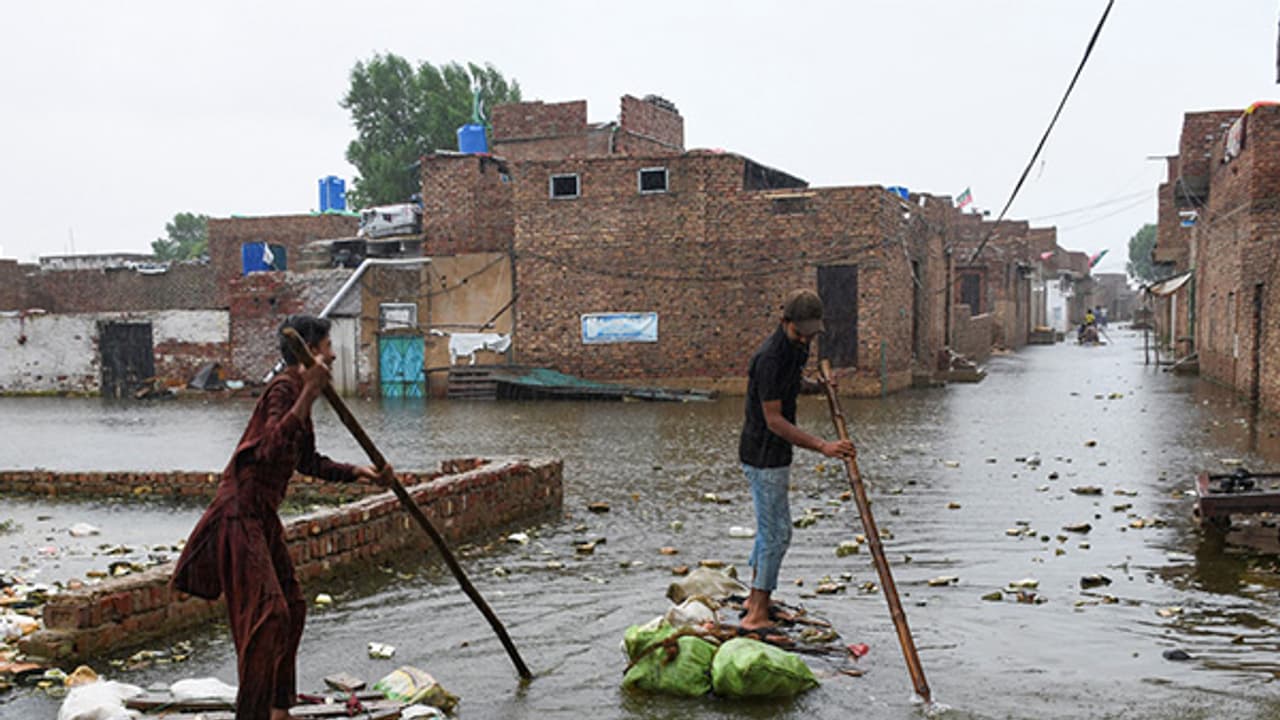Over 20 people died in fresh monsoon rains in Pakistan, raising the toll to 657 since June. Karachi faces urban flooding, while experts warn of rising climate risks, urging stronger preparedness against future disasters.
Pakistan continues to reel under the devastating impact of heavy monsoon rains, with more than 20 fresh deaths reported on Wednesday, bringing the total toll to nearly 700. National Disaster Management Authority (NDMA) said on Monday that at least 657 people have died in rain related incidents since June 26. The rains have triggered flash floods, landslides, and widespread destruction across multiple provinces. Khyber Pakhtunkhwa (KP) has emerged as the worst-hit region, recording 390 deaths, including 288 men, 59 children, and 43 women. Punjab has reported 164 deaths, with children forming the largest share of victims, while Sindh has confirmed 28 fatalities. In Gilgit-Baltistan, 32 people have died, and Balochistan has seen 20 lives lost. Pakistan-occupied Jammu and Kashmir (PoJK) has recorded 15 deaths, while the Islamabad Capital Territory has reported eight fatalities. The NDMA said that rescue and relief efforts are underway, but the scale of devastation has left thousands struggling with displacement, injury, and loss of livelihood. Authorities are on high alert as more rain is expected, raising fears of further flooding.
Karachi Paralysed By Flooding
The southern port city of Karachi, Pakistan’s commercial hub, is battling one of the worst urban flooding events in recent memory. On Tuesday, at least six people died as torrential rains lashed the city, submerging neighbourhoods and bringing life to a standstill. Most deaths were caused by house collapses and electrocution, according to local officials. The downpour triggered widespread power outages, leaving several areas in darkness for hours, while stormwater drains and sewers overflowed into homes. Major roads and intersections were inundated, forcing hundreds of commuters to abandon vehicles in knee-deep water. The severe weather also disrupted operations at Jinnah International Airport, where several domestic and international flights were delayed, cancelled, or diverted. The Sindh government declared a public holiday in Karachi on Wednesday to ease the chaos, but residents expressed frustration over poor drainage and urban planning failures. The floods have sparked renewed debate about Karachi’s vulnerability to climate shocks and the lack of preparedness by civic authorities. With the Pakistan Meteorological Department warning of more rainfall in the coming days, Karachi faces mounting fears of prolonged disruption and public health crises caused by stagnant water and contamination.
Climate Vulnerability And Global Warnings
The deadly monsoon floods in Pakistan highlight the country’s extreme vulnerability to climate change and natural disasters. UN News has pointed out that Pakistan remains highly exposed to climate shocks, with monsoon rains frequently overwhelming its drainage systems and fragile infrastructure. The 2022 floods, which killed more than 1,700 people and caused an estimated USD 40 billion in economic losses, remain a grim reminder of the dangers. Experts warn that without significant investment in disaster preparedness, resilient infrastructure, and early warning systems, Pakistan will continue to suffer high casualties every monsoon season. Climate scientists stress that global warming has intensified rainfall patterns in South Asia, making extreme weather events more frequent and destructive. The government has urged international partners to support Pakistan’s climate resilience efforts, but progress has been slow. For millions living in flood-prone regions, recurring disasters mean repeated displacement, loss of crops, and rising poverty. The ongoing floods serve as both a humanitarian crisis and a warning signal for global climate action. Without urgent reforms and coordinated response, Pakistan risks facing annual tragedies of a similar scale, further straining its economy and testing the resilience of its people.
